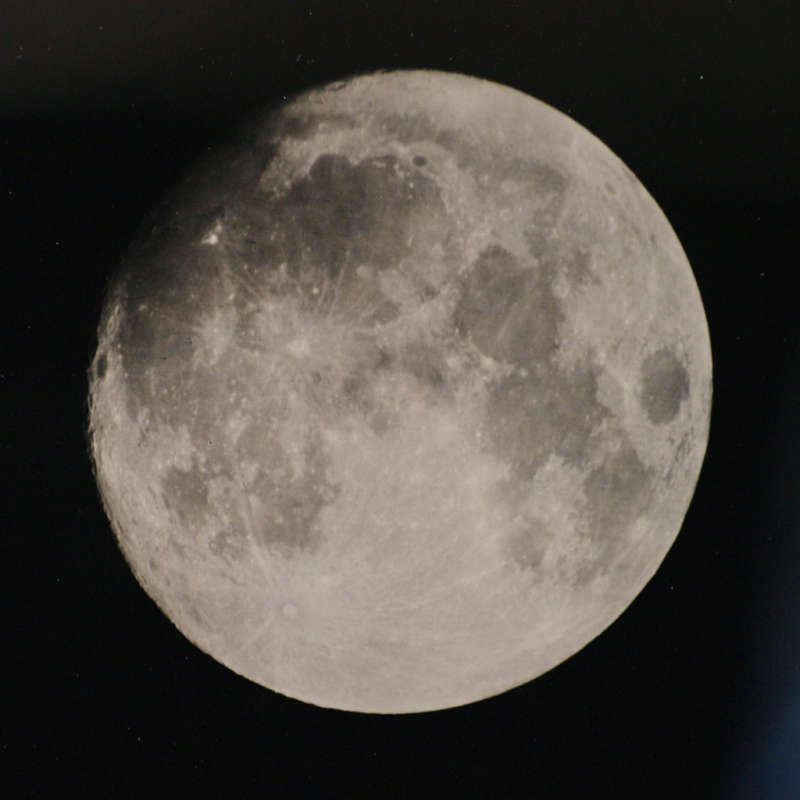Credit & Copyright: Mike Smolinsky
Explanation:
In the mid 19th century, one of the first photographic technologies used
to record the lunar surface was the
wet-plate collodion
process, notably employed by British astronomer
Warren De la Rue.
To capture an image, a thick, transparent mixture was
used to coat a glass plate, sensitized with silver
nitrate, exposed at the telescope, and then developed
to create a negative image on the plate.
To maintain photographic sensitivity,
the entire process, from coating to exposure to developing, had to be
completed before the plate dried, in a span of about 10 to 15 minutes.
This modern version of a wet-plate collodion
image
celebrates
lunar photography's early days, reproducing
the process
using modern
chemicals to coat a glass plate from a
21st
century
hardware store.
Captured last November 28 with an 8x10 view camera and backyard telescope,
it faithfully records large craters, bright rays,
and dark, smooth mare of the
waxing gibbous Moon.
Subsequently digitized, the image on the plate was 8.5 centimeters in
diameter and exposed while tracking for 2 minutes.
The wet plate's effective photographic sensitivity was about ISO 1.
In your smart phone, the camera sensor probably has a photographic
sensitivity range of ISO 100 to 6400 (and
needs to be
kept dry ...).
1999 2000 2001 2002 2003 2004 2005 2006 2007 2008 2009 2010 2011 2012 2013 2014 2015 2016 2017 2018 2019 2020 2021 2022 2023 2024 2025 |
Yanvar' Fevral' Mart Aprel' Mai Iyun' Iyul' Avgust Sentyabr' Oktyabr' Noyabr' Dekabr' |
NASA Web Site Statements, Warnings, and Disclaimers
NASA Official: Jay Norris. Specific rights apply.
A service of: LHEA at NASA / GSFC
& Michigan Tech. U.
|
Publikacii s klyuchevymi slovami:
Moon - Luna
Publikacii so slovami: Moon - Luna | |
Sm. takzhe:
Vse publikacii na tu zhe temu >> | |
